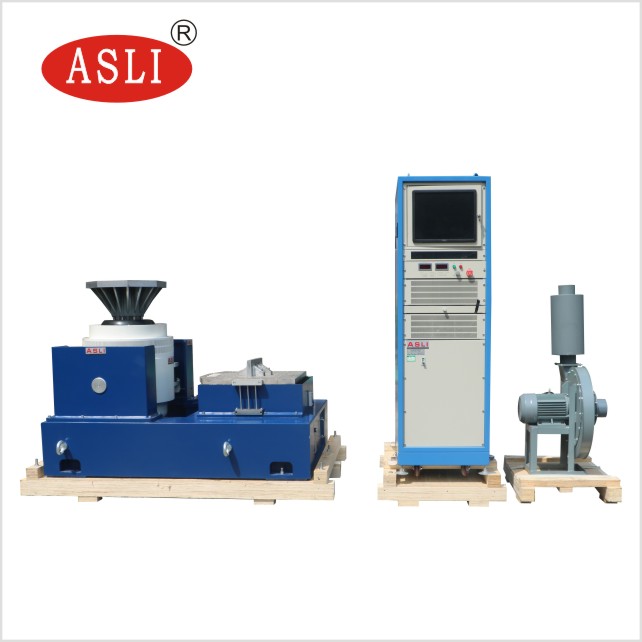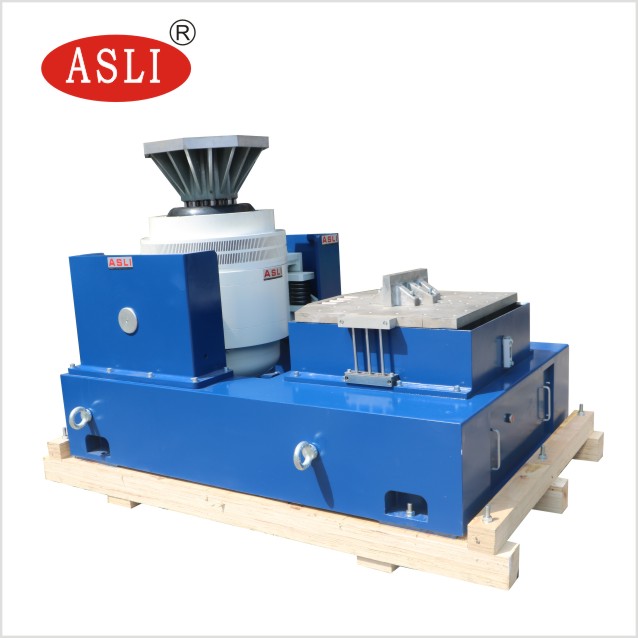In exploring the mechanisms behind an electrodynamic shaker, one encounters a sophisticated interplay of electromagnetic principles and mechanical engineering. Central to its operation is the ability to produce precise, repetitive vibrations at various frequencies and amplitudes, critical for testing the structural integrity and performance of materials and components. What makes these devices particularly intriguing is not only their application across diverse industries—from automotive to aerospace—but also how advancements in feedback control and cooling systems have enhanced their efficiency and reliability. This raises a pertinent question: how might emerging technologies further refine the capabilities of these vital testing instruments?
An electrodynamic shaker is a sophisticated device that utilizes electromagnetic forces to simulate a wide range of vibration patterns for testing the durability and performance of various products and components. Built on the principles of electromagnetic induction, these shakers typically consist of key components such as an armature, coils, and a magnetic circuit. Together, these elements interact to produce controlled, repetitive motion which is essential for rigorous testing protocols.
The armature is central to the shaker's function, acting as the moving part that vibrates during operation. Coils within the device generate magnetic fields as electric current passes through them, initiating movement in the armature based on electromagnetic principles. The magnetic circuit, usually composed of permanent magnets or electromagnets, works in conjunction to enhance the efficiency of this movement, ensuring a broad range of vibration frequencies can be achieved.
Understanding these components and the underlying principles helps stakeholders maintain better control over testing processes. It ensures that the vibration generated is both precise and variable, adapting to different test requirements. This adaptability is crucial for accurately assessing product resilience under varied operational stresses, thereby enhancing reliability and performance in real-world applications.
Understanding the components of an electrodynamic shaker provides the foundation for exploring its operational mechanism. At the heart of the shaker mechanism is a coil positioned within a robust magnetic field. This setup is crucial for transforming electrical energy into precise mechanical motion.
When alternating current flows through the coil, it interacts with the magnetic field to generate forces that propel the coil and attached armature in controlled vibrations, essential for precise vibration simulation.
The armature's function is central to the shaker's operation, acting as the conduit through which induced vibrations are transmitted to the test specimen. This ensures that the vibrations accurately mimic real-world dynamic stresses and scenarios.
To maintain the fidelity of these simulations, feedback control systems are integral. They continually monitor and adjust the armature's movements, correcting any deviations from the desired vibration profile, thereby enhancing the reliability of test results.
Moreover, due to the intense activity within the shaker, significant heat is generated. Cooling technology, incorporating mechanisms for air or water cooling, is employed to dissipate this heat effectively, ensuring continuous operation without risk of overheating or damage to the system.
This integration of advanced control and cooling technologies underpins the sophisticated operation of modern electrodynamic shakers.

Electrodynamic shakers serve a critical role in ensuring the durability and performance of products across diverse industries. In the automotive sector, they are pivotal for automotive testing, simulating the rigorous conditions that vehicles encounter on roads. These tests help in refining the resilience of engines, suspensions, and onboard electronics against severe vibration challenges.
In aerospace simulation, electrodynamic shakers verify the integrity of components that must endure the extreme forces of takeoff and landing. Aerospace firms rely on this technology to meet safety standards and enhance the reliability of avionics and structural elements.
For electronics durability, these shakers are indispensable in the consumer electronics field. They ensure that devices such as smartphones and laptops can withstand everyday usage scenarios, including accidental impacts and transportation-related stresses.
Military applications also benefit significantly. Electrodynamic shakers test the robustness of military hardware, preparing them for the harsh conditions of field operations, thus safeguarding mission critical operations and personnel safety.
Here is a breakdown of key applications:
| Industry | Application | Importance |
|---|---|---|
| Automotive | Testing components durability | Handle rough conditions |
| Aerospace | Component simulation | Ensure safety and reliability |
| Electronics | Durability testing | Sustain daily usage stresses |

Electrodynamic shakers are a cornerstone of vibration testing systems, offering several distinct advantages that make them a preferred choice across various industries. Here’s a closer look at their key benefits:
1. Wide Frequency Range
Electrodynamic shakers operate across a broad spectrum of frequencies, making them versatile for various vibration testing applications, from low-frequency structural tests to high-frequency component testing.
These shakers provide precise and repeatable vibrations, ensuring reliable testing results that meet stringent quality and compliance standards.
Electrodynamic shakers can replicate complex vibration profiles such as sine, random, and shock, enabling realistic simulations of real-world conditions.
Compared to other shakers, electrodynamic models are typically more compact and energy-efficient, saving space and operational costs.
With fewer mechanical components, electrodynamic shakers require minimal maintenance, ensuring durability and cost-effectiveness over time.
The advantages of electrodynamic shakers—such as their wide frequency range, high precision, and versatility—make them an indispensable tool for industries that demand reliable vibration testing. By investing in a high-quality electrodynamic shaker, companies can ensure product durability, improve safety, and maintain compliance with stringent industry standards.
Investing in a high-quality electrodynamic shaker is crucial for achieving precise and reliable vibration testing outcomes. These advanced devices play a pivotal role in performance testing, where the ability to simulate real-world stresses on components and assemblies under controlled conditions can determine the success of a product in its actual operational environment.
Quality assurance is fundamentally integrated into this process, ensuring that every product meets stringent industry standards before reaching the market.
A robust electrodynamic shaker also facilitates comprehensive reliability assessment, allowing manufacturers to identify potential failures and address them proactively. This is essential in industries where safety and performance are non-negotiable, such as aerospace and automotive manufacturing.
By subjecting products to rigorous testing scenarios, companies can guarantee longevity and reliability, which significantly enhances consumer trust and brand reputation.
Furthermore, product validation and structural analysis are critical for certifying that designs and materials behave as expected under stress. A high-quality shaker provides the precision required for such detailed investigations, empowering engineers with the data needed to make informed decisions about product modifications and improvements.
Therefore, the investment in a superior electrodynamic shaker is indispensable for maintaining control over product quality and innovation in a competitive market.
Maintenance costs for electrodynamic shakers encompass performance efficiency assessment, energy consumption monitoring, periodic calibration, repair frequency evaluation, and operator training needs, ensuring optimal control and longevity of the equipment in vibration testing applications.
Electrodynamic shakers are environmentally considerate, offering energy efficiency and noise reduction advantages. Sustainable manufacturing processes and material recycling contribute to a reduced carbon footprint, aligning with eco-friendly practices in modern industrial applications.
While electrodynamic shakers excel in vibration accuracy and testing versatility, their ability to simulate all types of vibrations is constrained by frequency limitations, affecting their simulation capabilities across various industry applications.
When operating electrodynamic shakers, ensure safety by using protective gear, adhering to operational limits, and conducting regular equipment checks. Implement strict training on emergency procedures, electrical safety, and handling hazardous materials with proper ventilation.
The average lifespan of an electrodynamic shaker is typically 10-15 years, contingent on rigorous preventative maintenance, timely replacement of parts, and adherence to warranty coverage specifics, mitigating common issues that may arise.
In conclusion, electrodynamic shakers represent a pivotal technology in modern vibration testing, enhancing product integrity and safety across various industries.
While concerns about the environmental impact of such technologies persist, the advancement in energy-efficient designs and the integration of sustainable practices significantly mitigate these effects.
By continuously refining these systems, the field ensures that the benefits of precise and reliable testing outweigh potential drawbacks, thereby supporting broader technological and industrial progress.
Founded in 1988, ASLI (China) Test Equipment Co., Ltd. produces high-quality inspection instruments and testing equipment, including temperature and humidity chambers, aging testers, and vibration testers. Certified to international standards, ASLI serves research, quality inspection, and educational sectors worldwide, renowned for precision, reliability, and exceptional customer service.
Contact us for a free quote of your ideal Electrodynamic Shaker!


[…] Steady-state and unsteady-state vibration testing focus on the behavior under continuous or changing vibrations, respectively. Steady-state tests measure frequency response at consistent excitation frequencies, while unsteady-state tests are crucial for understanding transient responses during sudden changes in vibration states. […]
[…] test systems include electrodynamic shakers, single-axis, multi-axis, and servo-hydraulic shakers for diverse testing […]
[…] state-of-the-art vibration testing tools allows companies to stay competitive by ensuring that their products are both durable and […]
[…] methods for this testing vary, including Sinusoidal Vibration Testing, Random Vibration Testing, and Shock Testing, each tailored to simulate different real-world […]